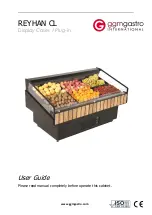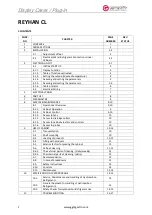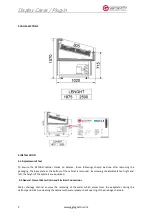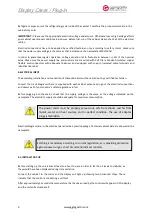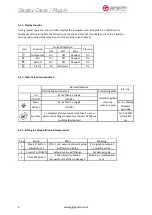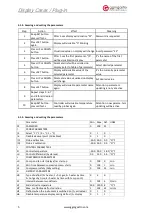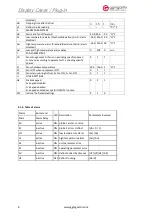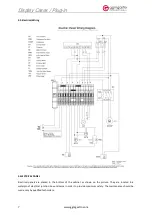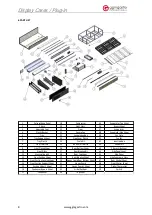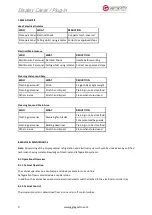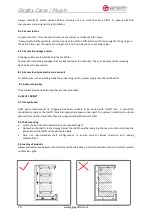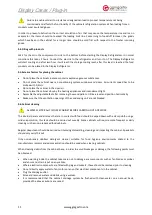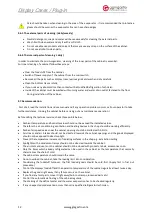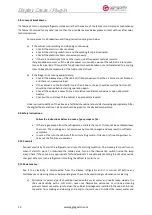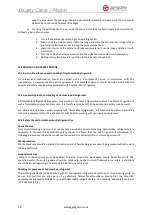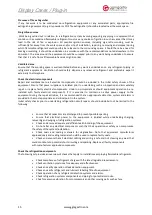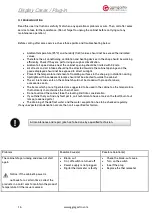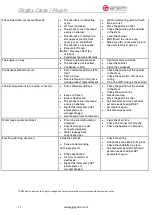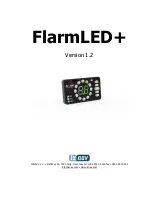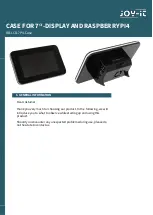
Display Cases / Plug-in
14
www.ggmgastro.com
keep the area clean. The drainage should be periodically checked and cleaned and the cup should
be emptied continuously to prevent leakages.
b)
For rising the performance, the ice inside the cabined should be melted in every 6 hours (defrost).
Follow the instructions below.
1-
Turn off the cabinet by switching the operating switch.
2-
Take out all the food products inside the fridge and place them in another refrigerator or
in another cold storage room to keep the temperature fixed.
3-
Clean the interior of the cabinet with lukewarm water and neutral soap and drain it with
a soft cloth.
4-
Turn the cabinet on after the interior and the surface of the cooler is completely dry.
5-
Approximately two hour later put the products back to the cabinet.
10.SPECIFICATION OF R290 PROPANE
10.1.Service, Maintenance and Handling of Hydrocarbon Refrigerants
All service and maintenance should be carried out by a competent person in accordance with the
manufacturer’s recommendations and requirements. All competent persons should be fully versant with the
hazards and safety requirements associated with hydrocarbon refrigerants.
10.2.General Approach to Handling of Hydrocarbon Refrigerants
All flammable refrigerant gases when mixed with air can form a flammable mixture. The effect of ignition of
such a flammable m ixture can be severe. It is therefore important that the appropriate safety requirements
are observed at all times when working with flammable refrigerants. All tools and equipment (including
measuring equipment) must b e checked for suitability for working with hydrocarbon equipment.
10.3.Safety Checks for Hydrocarbon Refrigerant Use
Check the area
Prior to commencing any service or maintenance work on systems containing hydrocarbon refrigerants it is
necessary to conduct the appropriate safety checks to ensure that the risk of ignition is minimised. The
following precautions should be considered the minimum required prior to commencing any work:
Work procedure
Work procedures should be planned to minimise risk of flammable gas or vapour being present while the work
is being performed.
General work area
Work in confined spaces must be avoided. The area around the work space should be sectioned off. The
condition within the working space should be made safe by the control of flammable materials. Instructions
should be issued regarding the nature of the work being carried out.
Checking for presence of hydrocarbon refrigerant
The working space should be checked with an appropriate refrigerant detector prior to and during work to
ensure that technici ans are aware of a potentially flammable atmosphere. Ensure that the detection
equipment being used is suitable for use with flammable refrigerants (e.g. non-sparking, adequately sealed or
intrinsically safe etc.)

